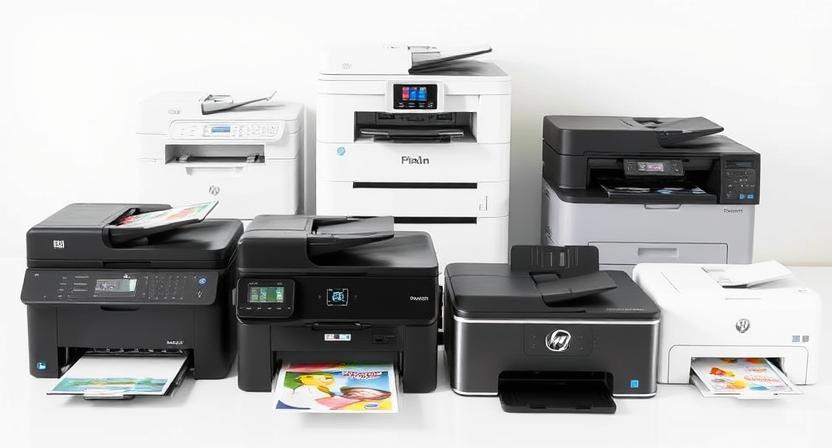Large format printing is an incredibly versatile tool used in industries ranging from marketing to architecture. Its effectiveness depends not only on design and technology but also on the materials selected for each print. Choosing the right substrate can make the difference between a striking visual success and a dull, ineffective display. Each project has its own set of needs, such as location, durability, and appearance, and the material must match these requirements for the print to perform well.
In this article, we will guide you through the most common materials used in large format printing and how to choose the right one for your specific project. By aligning the material with your objectives, you’ll ensure your large format printing delivers the impact you expect.
Why Material Selection Matters?
While the size and colors of a print are important, the material forms the foundation that holds everything together. The substrate affects image clarity, texture, weight, weather resistance, and even cost. A poor material choice can lead to fading, curling, or tearing—problems that reduce the lifespan and effectiveness of your printed asset.
Large format printing gives access to a wide variety of materials, and choosing the right one means thinking about where the print will be used, how long it needs to last, and what look you want to achieve. Outdoor banners need weather resistance, while indoor displays may prioritize elegance and fine detail.
Popular Materials for Large Format Printing
Here are some of the most commonly used materials, along with their strengths and best-use scenarios:
Vinyl
Vinyl is a go-to choice for many outdoor applications due to its water resistance, flexibility, and durability. It can be printed in high resolution and is often used for banners, building wraps, and vehicle graphics. It comes in different weights, finishes, and textures.
Canvas
Canvas provides a more artistic and textured look. It is ideal for reproducing photographs or paintings, especially in gallery settings or home décor. While not as weather-resistant as vinyl, canvas is perfect for interior spaces where aesthetics are important.
Fabric
Fabrics are used for backdrops, flags, and hanging displays. They are lightweight, wrinkle-resistant, and provide a soft, elegant look. Dye-sublimation printing works best on fabric and produces vibrant, long-lasting results.
Foam Board
Foam board consists of a foam core sandwiched between two paper or plastic surfaces. It is used mostly for indoor signage, presentations, and exhibition displays. It's lightweight and easy to mount but can be damaged easily if not handled carefully.
Corrugated Plastic (Coroplast)
This rigid plastic board is often used for yard signs and temporary signage. It's weather-resistant and lightweight, making it ideal for short-term outdoor use.
Acrylic
Acrylic provides a glossy, glass-like finish and is used for modern-looking signage. It is heavier and more expensive but offers high durability and an upscale appearance, suitable for business interiors and point-of-sale displays.
PVC and Sintra Board
PVC boards are durable and versatile, used for long-term indoor or short-term outdoor signage. They’re resistant to dents, moisture, and UV exposure.
Factors to Consider When Choosing Materials
Selecting the best material for your large format printing project depends on several critical considerations:
Indoor or Outdoor Use
Exposure to sunlight, wind, and rain requires weatherproof materials. Vinyl and corrugated plastic work best outdoors, while canvas and foam board are ideal for interiors.
Lifespan
Temporary campaigns might not need premium materials. Corrugated plastic is excellent for short-term use, while acrylic and PVC are better for longer installations.
Portability
If your print needs to be transported often (like trade show backdrops), lightweight and flexible materials such as fabric or foam board are preferable.
Budget
Some materials, like acrylic or high-end PVC, are more expensive but offer better durability and appearance. Others, like paper or coroplast, are more affordable for budget-sensitive projects.
Finish and Look
If your brand or project requires a premium, sleek look, acrylic or canvas might be the right choice. For a casual or rugged presentation, vinyl or foam board might suffice.
Matching the Print Technology to the Material
Not all printing technologies are compatible with every material. Here’s a quick guide:
- Solvent and eco-solvent printers are excellent for vinyl and PVC.
- UV printing works on rigid materials like acrylic and foam board.
- Dye-sublimation is perfect for fabric and soft signage.
- Latex printing supports a wide range of flexible materials and is eco-friendly.
Consulting with your print provider can help you determine the right material-technology combination for your project.
Practical Use Case Examples
To illustrate how material choice can vary, here are a few scenarios:
- A construction company needs a site sign: corrugated plastic is durable and budget-friendly.
- An art gallery wants to reproduce artwork: canvas offers texture and visual depth.
- A retail store launching a seasonal campaign: vinyl banners with grommets offer easy installation and removal.
- A tech firm needs booth graphics for a trade show: fabric backdrops are lightweight, foldable, and transportable.
Conclusion
Choosing the right material is a foundational step in any successful large format printing project. Each material brings unique qualities that affect the appearance, durability, and functionality of the final product. By understanding the strengths and best uses of materials like vinyl, canvas, fabric, acrylic, and others, you can ensure your prints deliver both visual and practical results.
When planning your next large format printing task, remember that the right material will enhance your message, protect your investment, and support the goals of your project from start to finish.





Comments